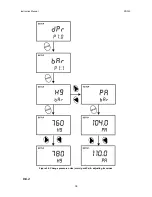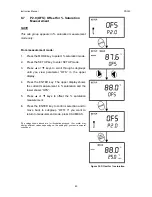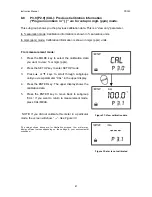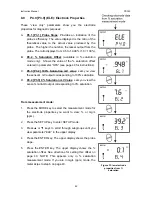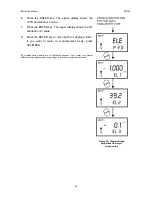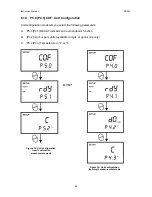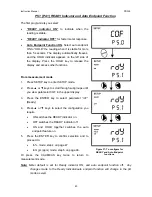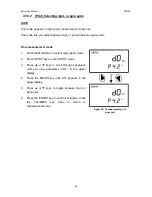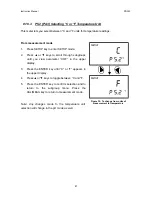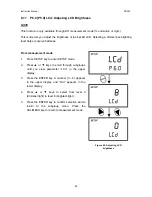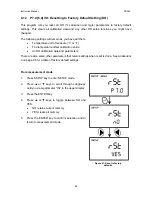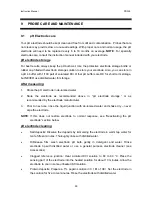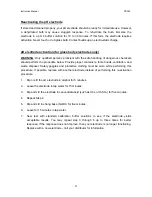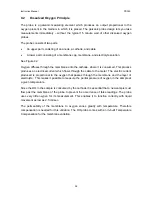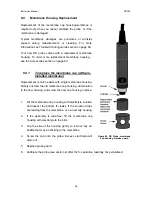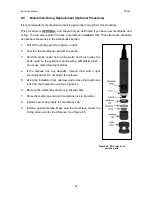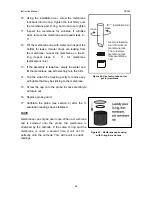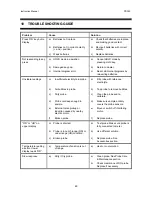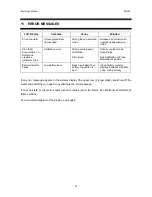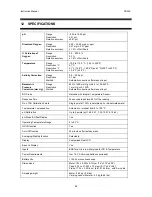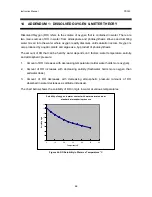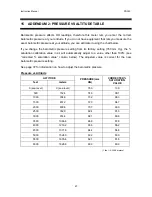
Instruction Manual
PD 300
9.2
Dissolved Oxygen Principle
The probe is a galvanic measuring element which produces an output proportional to the
oxygen present in the medium in which it is placed. The galvanic probe design lets you take
measurements immediately – without the typical 15 minute wait of other dissolved oxygen
probes.
The probe consists of two parts:
•
An upper part consisting of an anode, a cathode, and cable.
•
A lower part consisting of a membrane cap, membrane, and electrolyte solution.
See Figure 42.
Oxygen diffuses through the membrane onto the cathode, where it is consumed. This process
produces an electrical current which flows through the cable to the meter. The electric current
produced is proportional to the oxygen that passes through the membrane and the layer of
electrolyte. This makes it possible to measure the partial pressure of oxygen in the sample at
a given temperature.
Since the DO in the sample is consumed by the cathode it is essential that a new sample must
flow past the membrane of the probe to prevent the occurrence of false readings. The probe
uses very little oxygen for its measurement. This enables it to function correctly with liquid
movement as low as 2.5 cm/sec.
The permeability of the membrane to oxygen varies greatly with temperature. Therefore
compensation is needed for this variation. The DO probe comes with an in-built Temperature
Compensation for the membrane variation.
52

